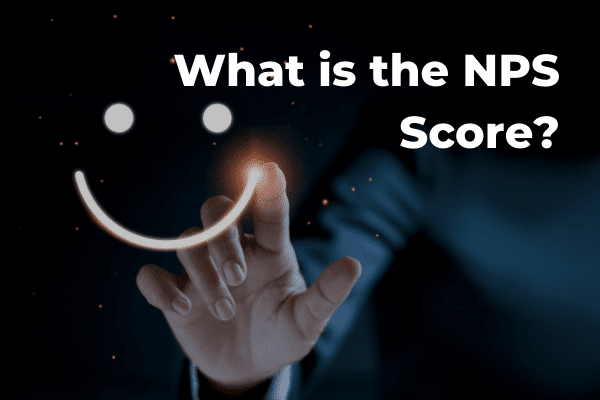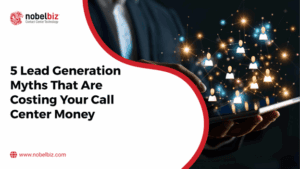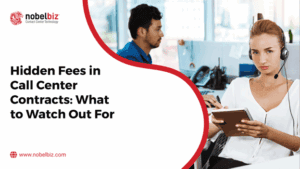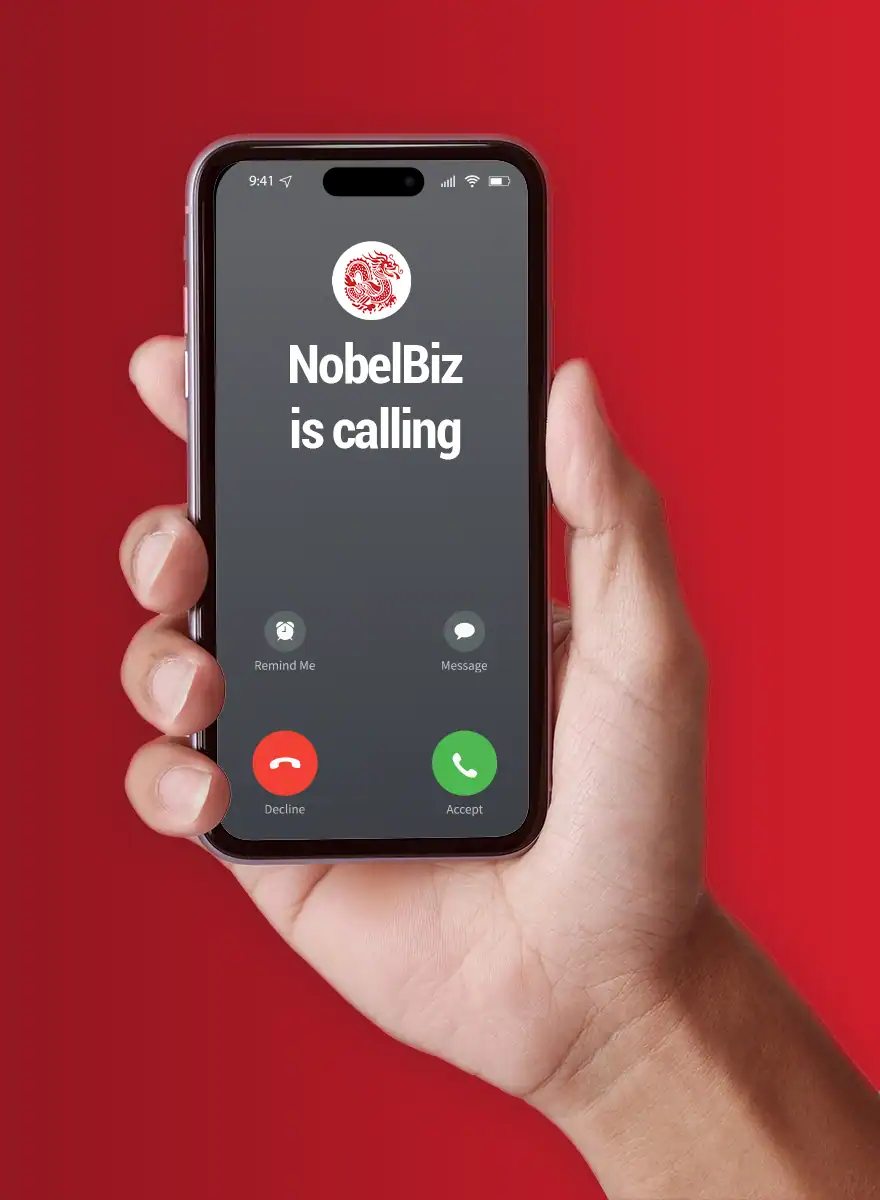’Are your clients willing to refer your products, service, or business?’’ This is one of the most important goals for contact centers. The best and most quantifiable way to answer this question is through the Net Promoter Score (NPS). A Key Performance Indicator (KPI) measures the amount of positive impact generated by your customer interactions.
In laymen’s terms, this metric will tell you everything about your clients’ recommendation power. This article will discuss the nature of the NPS, its formula, limitations, and five strategies to improve it.
What is exactly The Call Center Net Promoter Scores (NPS)?
The Net Promoter Score is an inbound Key Performance Indicator that assesses your customer happiness. It measures the possibility of your client referring you to someone based on a simple question: “How likely are you to suggest our product/service on a scale of 1 to 10?”
Here is how it works; your consumers are classified into one of three groups based on their responses:
- (9-10) Advertisers or Promoters: these are your most devoted and passionate clients, eager to serve as authentic brand advocates. This is intentionally high to guarantee that clients are genuinely unwavering advocates of the products or services provided by your call center.
- (7-8) Neutral: Neutral clients are typically happy but not yet satisfied enough to blindly trust your business. The danger of switching to a competitive offer remains considerable. These clients are difficult to persuade.
- (1–6) Detractors: The lowest score implies that there is an issue with your agent-client interaction. Detractors are dissatisfied and may quit doing business with you and discourage others from trusting your contact center.

How to measure Your Contact Center’s NPS?
The following formula is used to measure the Net Promoter Score:
NPS = Net Promoter Score – Net Detractor Score
Net Promoter Score is the average number of customers who will say that they will recommend the product or service versus those who will do just the opposite. With all these metrics, there are many important assumptions you should consider when formulating an appropriate NPS for your contact center. Here are some of them:
- Clearly define your company goals. Identify which metric is needed to measure success, identify the sources from which the information will come, and define the goal of the strategy.
- Understand your “threats” and create an effective process to detect the red flags and reduce the threats.
- Improve your data quality and assessments by reviewing and adjusting various analytics, testing, and measuring activities.
- Determine the threshold with which the focus groups must respond to recognize success.
- Increase your customers’ familiarity with the concept of NPS. Use all interaction channels to communicate the importance of NPS and spread the message about how it works in your business.
NPS can be measured by multiple means, depending on your organization’s needs. So, if you are looking to determine your NPS performance, choose one of the following methodologies:
- Internal reviews.
- Call center recording.
- Monitoring calls.
- Qualitative or quantitative call center surveys.
How to interpret the NPS Score?
The NPS score can vary from -100 (when all customers are unhappy) to +100 (when all customers are happy or promoters). In other words, the higher your score, the happier your consumers are. A positive NPS score or greater than 0 is deemed “good,” +50 is “excellent,” and greater than 70 is “exceptional” by industry standards.
Also, when calculating your NPS, simply disregard the average scores or the neutrals. Unlike the other groups, the latter has a low degree of positive or negative involvement since they are neither excellent nor terrible ambassadors.
How to improve your call center net promoter score?
Here are 5 Easy Ways!
To assess what is beneficial to the Net Promoter Score Roi, the sector of activity and the business goals must be considered.
If your call center net promoter score is low, follow these five recommendations to enhance it through customer engagement.
1. Split your contact center clients into groups and focus on one of them
Segmentation will considerably assist you in correctly targeting your clients and running specialized marketing. By performing NPS surveys, you will be able to categorize your consumers as critics, passives, or promoters based on their responses. Indeed, based on their NPS score, you may classify them as we previously explained:
- 0 to 6 = Detractors
- 6 to 8 = Neutrals
- 9 to 10 = Promoters
With this segmentation, you may target your detractors and try to turn them into promoters. You may also target your promoters with a campaign, for example, asking them to recommend you to people they know.
Another approach is to concentrate on neutrals. This is frequently an underutilized group and requires less work to convert them into promoters. If this portion of your client base is more inclined to a score of 8, it will be simpler to convert them into ambassadors.
As a result, doing semantic and emotional analysis of your customer reviews is a tried-and-true way to determine the actions to be performed for each of your segments and optimize your NPS.
2. Respond to critics as soon as possible

Companies that disregard their critics cannot learn from them and risk permanently losing clients. However, suppose you reply swiftly to their bad feedback (while it is still fresh in their memory). In that case, you can not only mitigate the negative impact of that feedback but also perhaps keep that client and, as strange as it may sound, eventually turn them into a promoter.
As a result, a prompt response is critical. Contact your detractors as soon as possible and as directly as possible. Due to a transaction, you probably have their contact information, whether it’s an email address or a phone number. Contact them, explain why you’re following their request, and attempt to understand their point of view.
Every client will likely have a different perspective on their unpleasant experience, but an adequate reaction to their dissatisfaction and a technique to enhance NPS may be to:
- Provide them with a service extension or a better product.
- Provide them with a more convenient alternate solution.
- Or simply treat them with more respect when you contact them, and you may be able to influence their opinion.
Remember that the sooner you respond to your critics, the more satisfied they will be. Try to handle their issue within 24 hours of receiving it. You will have a decent chance of keeping them as a client and increasing your NPS in the long run.
3. Do not neglect your promoters
As stated initially, it is critical to concentrate on the critics. We don’t need to remind you that every client is essential, and it’s crucial to look after your promoters. It is easy to overlook what is going well. Still, if you focus on the critics, you risk alienating your loyal clients, who may take offense at having their devotion neglected in favor of those who complain.
The benefit of promoters is that they are entirely committed. They are so taken with your goods or service that they are eager to tell others about it. You enhance their loyalty by rewarding them, and they also become an extension of your marketing department by sharing their happiness with others.
Promoters will most likely help raise your NPS by referring people to whom they may convey their appreciation for your excellent customer service and for getting rewards such as:
- Exclusives or limited promotions.
- The chance to be among the first to sample a new product or service.
4. Improve your NPS by personalizing your client interactions
It is critical to value each client while gathering evaluations and comments to calculate your NPS. That is why it is critical to gather, analyze, and respond to feedback personally and directly to the client in question. Personalized Customer Experience in contact centers ensures that the NPS will improve in the short run.
To accomplish this, simply carry out the following steps:
- When conducting a survey, include the recipient’s name in the email’s subject line.
- Address them by their first names.
- Instead of sending an automatic answer, send more personalized surveys. Nobody enjoys receiving generic emails that appear to be spam.
- Experiment with various approaches for different consumers. Emails aren’t for everyone; others prefer a text messages or a phone calls or social media.
- Do not ask broad queries in your comments to detractors; instead, refer explicitly to the purchased product or service. And get to the bottom of the problem.
5. Simplify the process of collecting client feedback
As strange as it may sound, most of your consumers – even the promoters – do not share your enthusiasm for your business and therefore lack the motivation to raise the NPS. In reality, most of them will have forgotten about you and the products or services they just purchased and will have moved on to something else.
Obtaining a large amount of feedback from your clients might be a monumental task. That is why you must make the procedure as simple as possible for them. If ordinary customers believe that providing feedback would require a significant amount of work, they are unlikely to do so. Finally, your NPS will be skewed and reflect your most fervent detractors and promoters.
So, how can you streamline the feedback process?
After the consumer has had time to utilize and comprehend the product, send the survey. As a general rule, this should be right after a phone call.
Simply ask, “How likely are you to recommend the product?” or “Why did you give this rating?” without any more questions. If you add too many questions, your response rate will suffer.
Furthermore, these principles should not simply apply to NPS surveys. It would help if you also made it simple for customers to file complaints. Although it may appear contradictory, the knowledge offered by your critics is essential. You must learn what your contact center is doing wrong.
Most detractors will not post feedback; it is up to you to make it as simple as possible for them to learn more. Of course, this will have a short-term negative impact on your NPS (because of the additional negative input), but in the long run, you will win, and your score will rise.
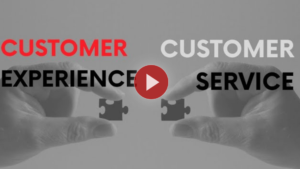 Right now, how you treat your customers is far more essential than what you have to offer. Listen to Christa Heibel, Founder & CEO of CH Consulting, discuss the topic of Customer Experience vs Customer Service. There’s a big difference between both concepts. Found out more from our First Contact Podcast Series.
Right now, how you treat your customers is far more essential than what you have to offer. Listen to Christa Heibel, Founder & CEO of CH Consulting, discuss the topic of Customer Experience vs Customer Service. There’s a big difference between both concepts. Found out more from our First Contact Podcast Series.
Conclusion: the NPS is important but you also need to listen to your customers

As you can see, with all of these benefits, the NPS is an essential indicator for measuring customer satisfaction in your call center. However, you can’t measure quantity without quality!
The qualitative question supplements the first question, “How likely are you to suggest this product or service to a friend or loved one?” and aims to provide vital insights to help you improve your NPS.
Here are some good examples:
- “Can you explain why you gave this score?”
- “How can we enhance our services/products?”
Because of these questions, you will be able to gather a score for each respondent and a vital verbatim that should not be overlooked!
If you get a few responses, you can classify them manually. This entails reading through all of the verbatims one by one and categorizing them, allowing you to score the themes covered by consumers in their verbatims quantitatively: quality of reception, response time, telephone experience, and so on. The disadvantage of this procedure is that it takes a long time.
At NobelBiz, we value the voice of our clients, and with 20 years of experience in offering comprehensive and personalized solutions for call centers worldwide. Our telecommunication services and cloud contact center solution can meet the needs of all types of contact centers, regardless of size, industry, or activity (Inbound, Outbound, or Mixed). That is why we are known as the promise keepers of the industry.
NobelBiz Omni+, our Cloud Contact Center Solution, can consolidate all communication channels (telephone, social media, webchat, and SMS) into a single, unified platform. This will offer your clients a seamless and excellent customer experience.
If you’re looking for a contact center telecommunications solution, NobelBiz’s voice carrier network is constructed on a highly redundant infrastructure, ensuring that every call is delivered without interruption.
Furthermore, our voice carrier network is one of the most modern call center voice services available, with worldwide coverage and redundant servers that provide 99.99% uptime. Our voice carrier is:
- Equipped with the most advanced productivity tools ( IVR, ACD, Local Number ID Management, compliance filters, and more)
- Specifically designed to meet the needs of the call center sector.
- Infrastructure that is one-of-a-kind and dependable, with several redundancies.
- In terms of cost per minute, we are the most competitive telecom provider.

Abdelmounim Benharouga has always had a strong passion for writing and digital marketing. He started as a Digital Content Writer part of marketing department then moved to being Customer Success Manager for the African Region within the Nobelbiz team.


